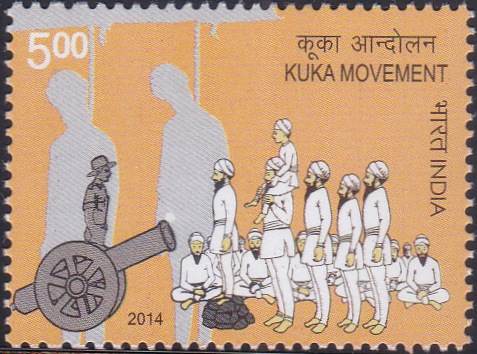
Kuka Movement
A commemorative postage stamp on the Namdhari Movement, a series of extremist activities by Namdhari Sikhs against British Raj :
Issued on Dec 24, 2014
Issued for : Department of Posts is happy to release a postage stamp to highlight the heroic deeds of the unsung heroes of the Kuka Movement.
Credits :
Stamp/FDC/Cancellation : Alka Sharma
Type : Stamp, Mint Condition
Colour : Multi colour
Denomination : 500 Paise
Stamps Printed : 0.6 Million (0.1 Million for proponent)
Printing Process : Wet Offset
Printer : Security Printing Press, Hyderabad
About :
- For many years after the first war of Independence, in 1857, armed resistance against the British was witnessed in many parts of the country. Though the incidents of resistance were mostly local, it revealed the discontent against the foreign rulers.
- The Kuka Movement marked the first major reaction of the people in the Punjab to the new political order initiated by the British after 1849. The Namdhari Movement, of which the Kuka Movement was the most important phase, aimed at overthrowing the British rule. The Namdharis were also known as ‘‘Kukas’’ because of their trademark style of reciting the “Gurbani” (Sayings/Teachings of the Guru). This style was in a high-pitched voice called “Kook” in Punjabi. Thus, the Namdharis were also called “Kukas”.
- Satguru Ram Singh, son of a poor carpenter, who was born on 3rd February, 1816 in a small village of Bhaini, around 7 kilometers away from Ludhiana, founded the Namdhari Sect on 12th April, 1857 at Bhaini Sahib. He asked his followers to boycott everything which bore the stamp of the British Government. In course of time, Baba Ram Singh became a secular chief of Kukas. He would go about surrounded by horsemen and held his court everyday. He appointed Governors and Deputy Governors to organize Kukas in different districts of the Punjab. He also inspired young men by giving them military training.
- The Kuka Movement made the people aware of their serfdom and bondage. It evoked the feelings of self respect and sacrifice for the country. Within a few years, the followers of the Kuka Movement increased manifold. They called for boycott of educational institutions of British and laws established by them. They were rigid in their clothing and wore only hand-spun white attire. The Kuka followers actively propagated the civil disobedience.
- It seemed inevitable that before long, a clash would occur between the Kukas and the British Government. The clash started in 1871 and culminated in the Kuka raid on Malerkotla on January 15. 1872. The Kuka outbreak of 1872 was visited by terrible punishment, which was equalled in brutality by few events in our history. A large number of Kuka prisoners were blown to death with cannons and their leader Baba Ram Singh was deported to Rangoon.
- In 1920, the Kukas started publication of the paper ‘Satyug‘, and in 1922, the daily, ’Kuka’ was started. When the Non-Cooperation Movement was started by Gandhiji, the Kukas joined hands.
- Text : Based on the material furnished by the proponent.



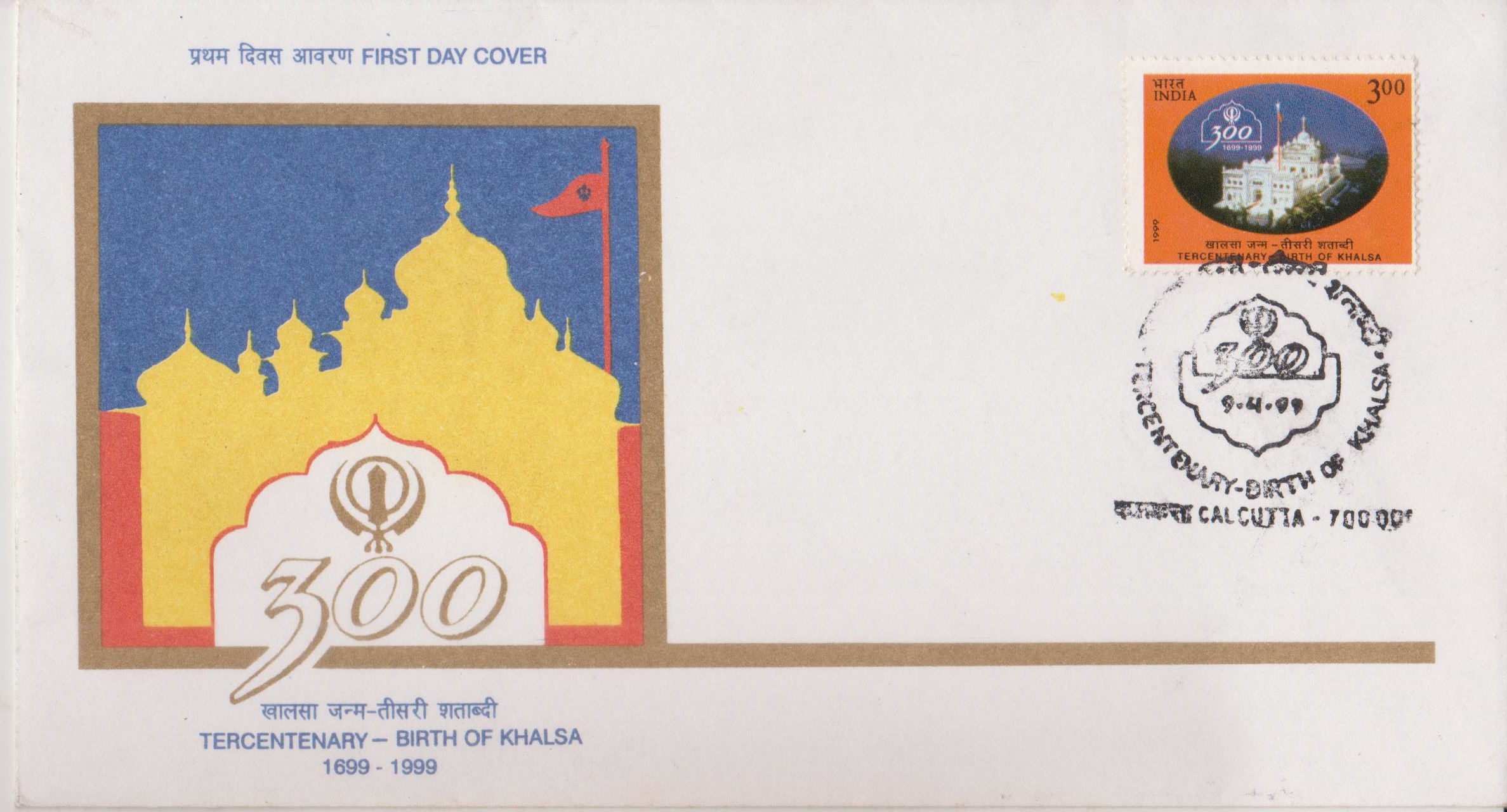
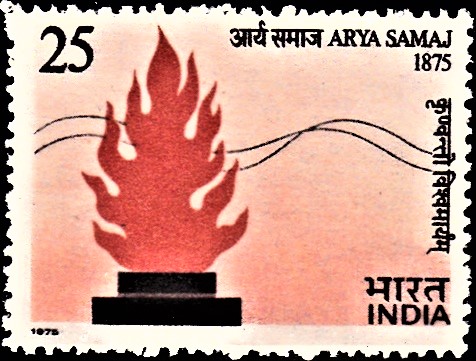
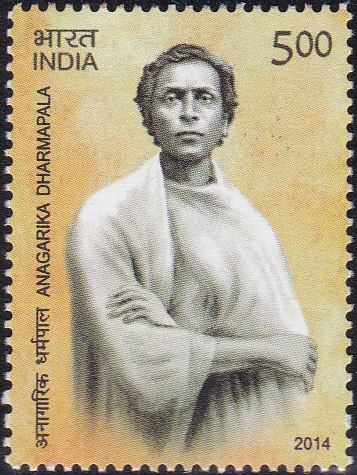
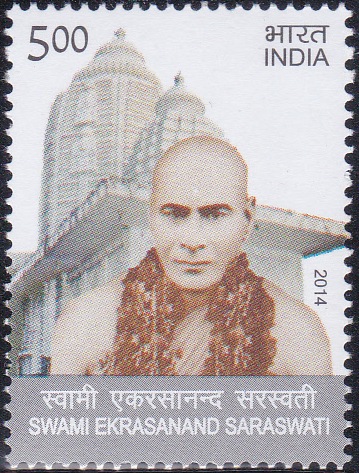
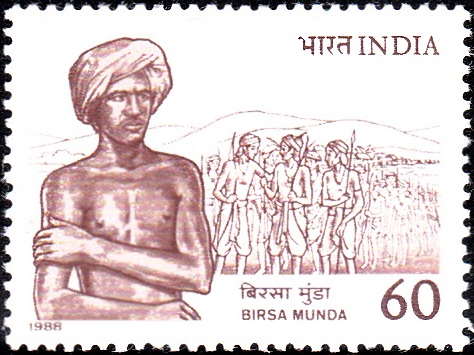
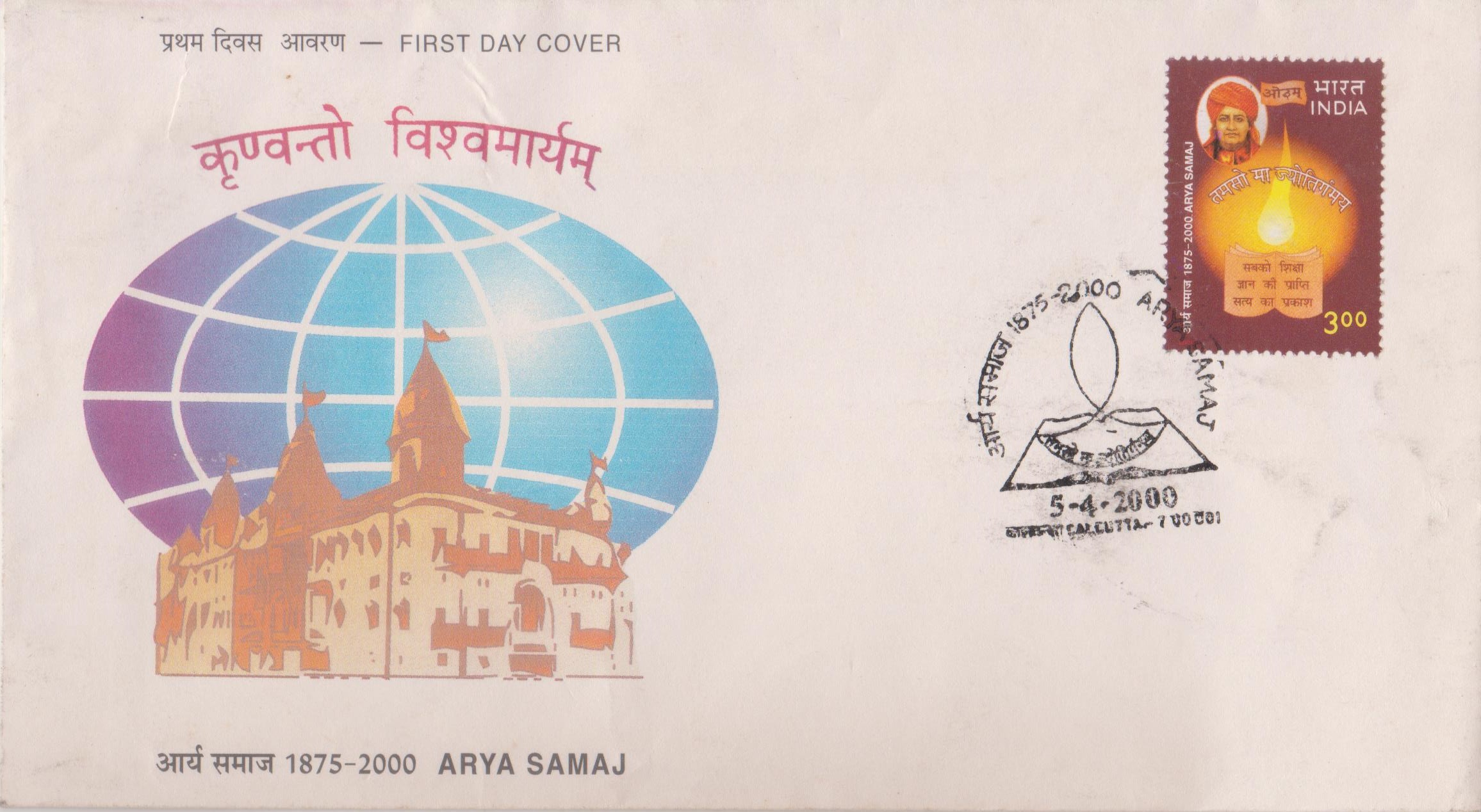
Kuka,movement,